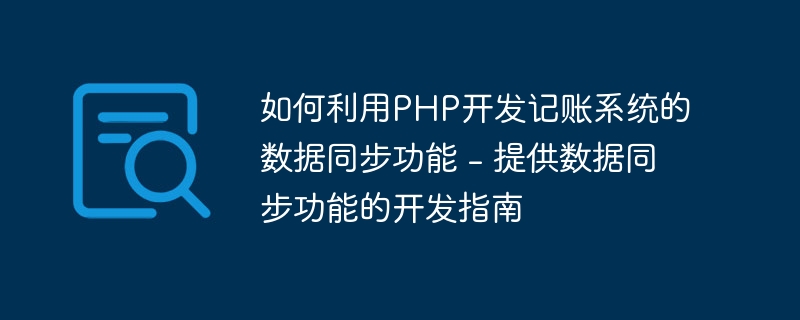

How to use PHP to develop the data synchronization function of the accounting system
Introduction:
With the rapid development of the Internet and mobile technology, the accounting system has become a An integral part of daily life. Many users use accounting systems for financial management, which requires data synchronization to share and update data on different devices. This article will be based on PHP and provide developers with development guidelines for the data synchronization function of the accounting system, including specific code examples.
1. Overview
The data synchronization function of the accounting system mainly includes the following aspects:
2. Data upload
Data upload refers to uploading local data to the server so that the data can be synchronized on different devices. The following is a simple PHP code example:
The above code saves the passed data to the server or database by receiving the POST request. Developers need to synchronize data to the appropriate location based on specific needs. In practical applications, you can use the server-side API to upload data to the server using HTTP requests.
3. Data download
Data download refers to downloading the latest data from the server to the local device to update the local data. The following is a simple PHP code example:
The above code queries the latest data on the server by calling thequery_remote_data()function, and then saves the data to a local file. In practical applications, you can use the server-side API to obtain the latest data through HTTP requests.
4. Data merging
Data merging refers to merging and maintaining consistency when local and server data conflict. The following is a simple PHP code example:
The above code reads local data by calling theread_local_data()function, and queries the server by calling thequery_remote_data()function on the latest data. Then call themerge_data()function to merge the data, and finally call thesave_merged_data()function to save the merged data locally.
5. Data conflict resolution
Data conflict resolution refers to dealing with possible data conflicts. For example, a data has been modified locally and has been modified by other users on the server side. The following is a simple PHP code example:
The above code detects whether local data and server data conflict by calling thehas_conflict()function. If a conflict occurs, you need to call theresolve_conflict()function to resolve the conflict and save the resolved data to the server. If there is no conflict, the local data is saved directly to the server.
6. Summary
This article provides a development guide for using PHP to develop the data synchronization function of the accounting system, and provides specific code examples. Developers can conduct further development and optimization based on specific needs and practical applications. The data synchronization function of the accounting system is not only very important to users, but also crucial to realizing data sharing and maintaining data consistency.
The above is the detailed content of How to use PHP to develop the data synchronization function of the accounting system - Provides a development guide for the data synchronization function. For more information, please follow other related articles on the PHP Chinese website!